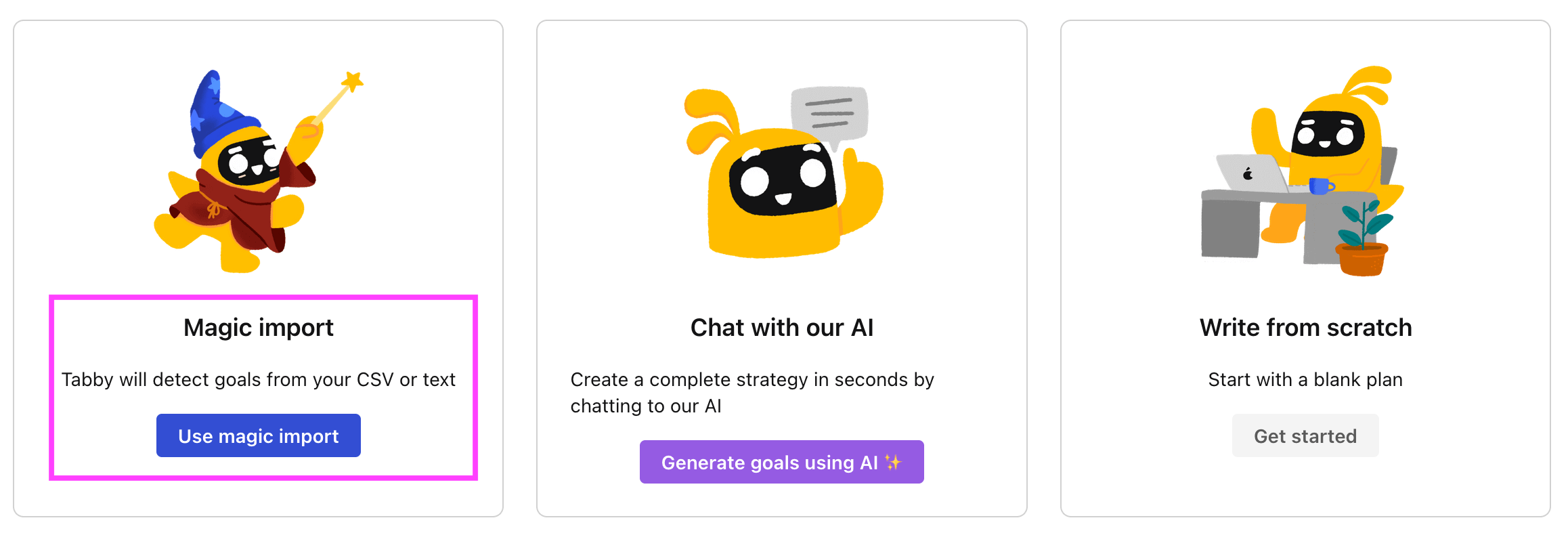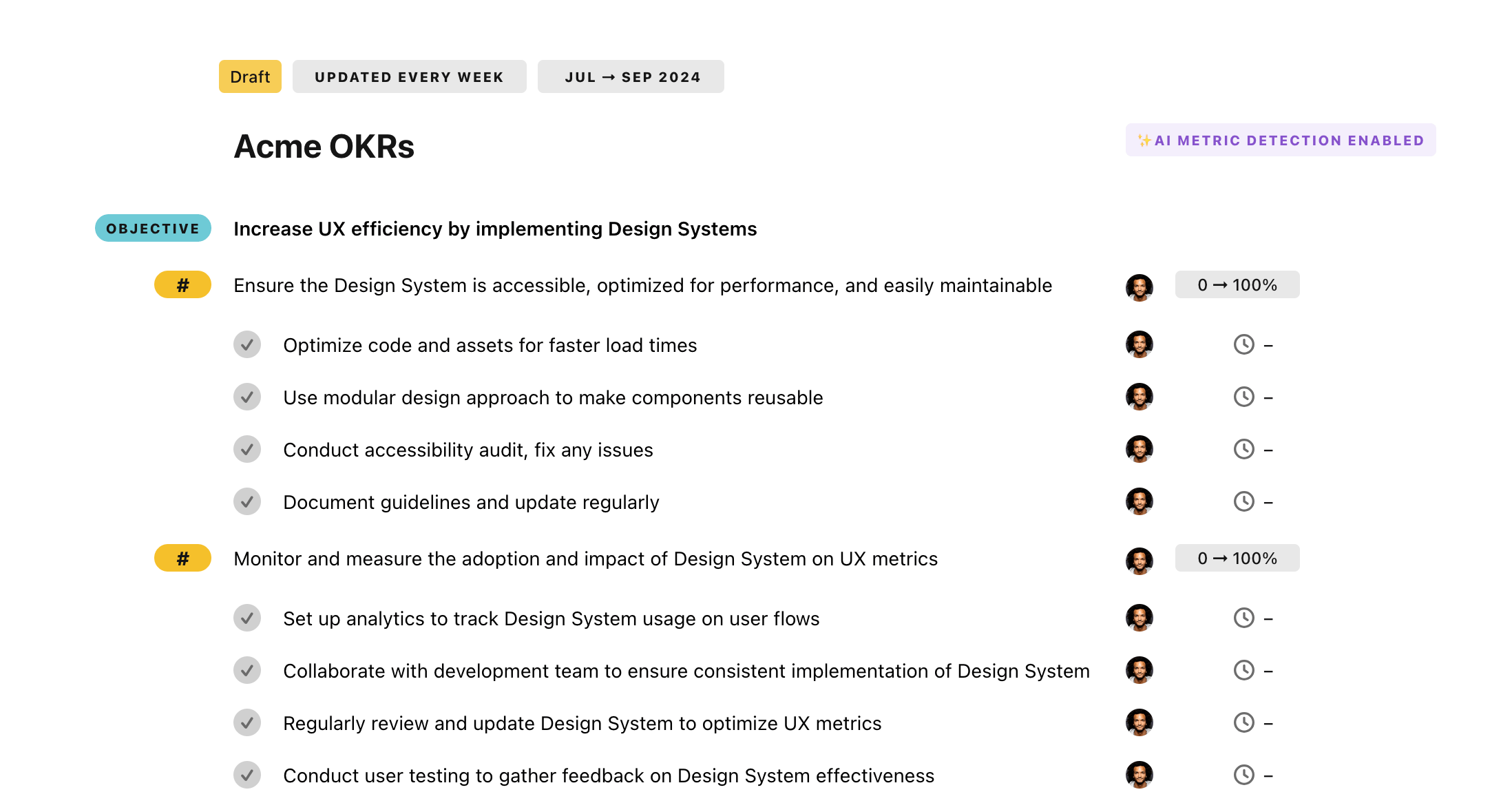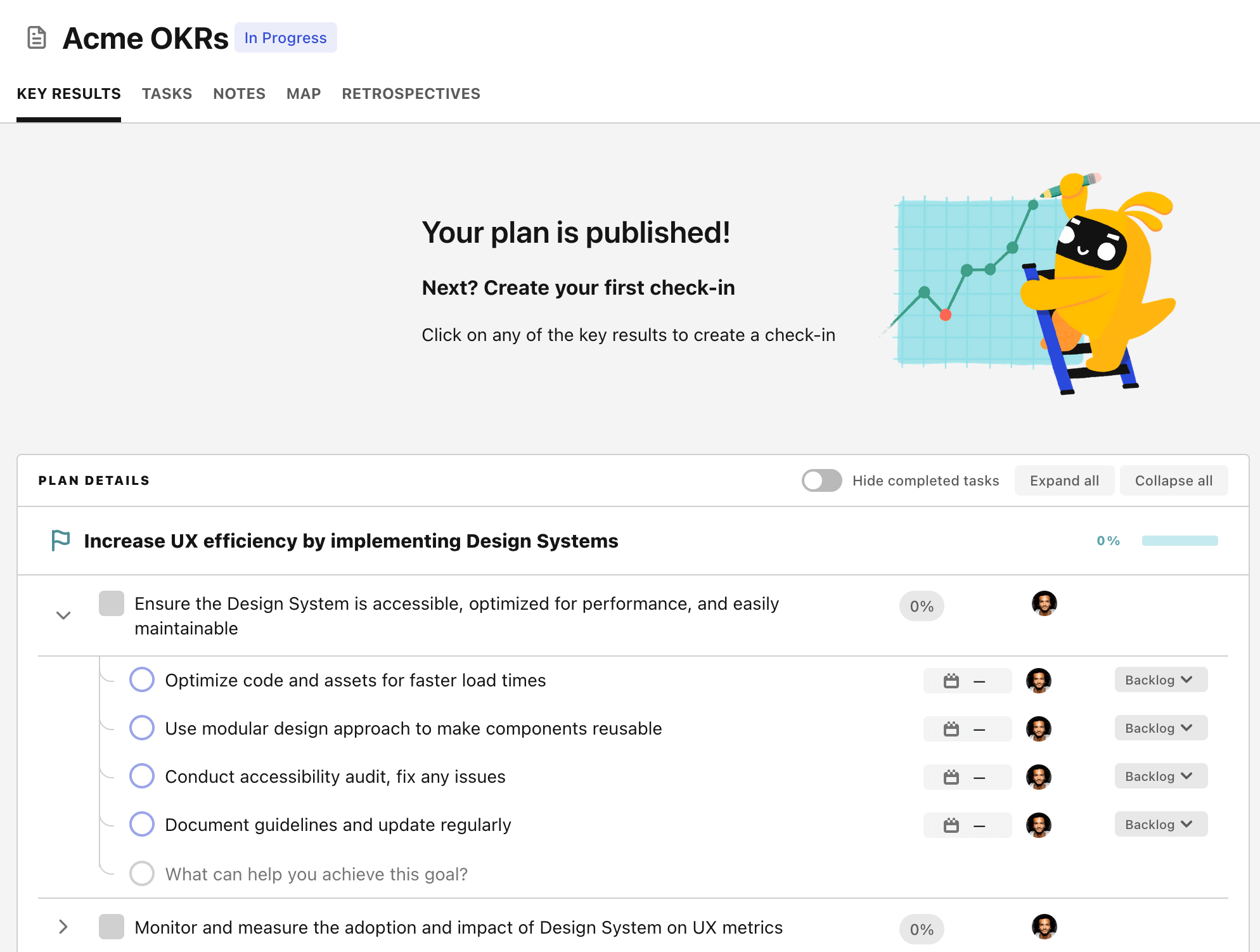OKR template to enhance release quality and ensure punctuality
Your OKR template
In addition, adherence to predetermined release dates across all projects should be upheld 100% of the time. To ensure this happens, continuous monitoring and updating of project progress, setting firm but achievable deadlines for all project stages, and robust team communication are key strategies for success.
Another crucial objective is reducing post-release bugs by 30% when compared to the previous quarter. Stricter code review processes and increasing automated testing routines are among the strategies intended to achieve this goal. Enhancement of team skills through continual training is another important undertaking.
The OKR underpins two main areas: the significance of preemptive actions, such as beta testing and setting firm project deadlines, and the necessary follow-up actions, such as the reduction of post-release bugs. It aims to facilitate an efficient, reliable, high-quality product release process that meets the set delivery timeline.
ObjectiveEnhance release quality and ensure punctuality
KRIncrease Beta testing completion rate to 100% before official release
Provide comprehensive support to facilitate timely completion
Streamline beta testing process for better efficiency and time management
Implement a reward system to motivate beta testers
KRAchieve 100% target release dates adhered to across all projects
Regularly monitor and update progress towards release dates
Establish firm, achievable deadlines for all project stages
Ensure effective communication within the project team
KRDecrease post-release bugs by 30% compared to previous quarter
Implement stricter code review processes
Increase automated testing routines
Invest in ongoing team skill training
How to edit and track OKRs with Tability
You'll probably want to edit the examples in this post, and Tability is the perfect tool for it.
Tability is an AI-powered platform that helps teams set better goals, monitor execution, and get help to achieve their objectives faster.
With Tability you can:
- Use AI to draft a complete set of OKRs in seconds
- Connect your OKRs and team goals to your project
- Automate reporting with integrations and built-in dashboard
Instead of having to copy the content of the OKR examples in a doc or spreadsheet, you can use Tability’s magic importer to start using any of the examples in this page.
The import process can be done in seconds, allowing you to edit OKRs directly in a platform that knows how to manage and track goals.
Step 1. Sign up for a free Tability account
Go tohttps://tability.app/signup and create your account (it's free!)
Step 2. Create a plan
Follow the steps after your onboarding to create your first plan, you should get to a page that looks like the picture below.

Step 3. Use the magic importer
Click on Use magic import to open up the Magic Import modal.
Now, go back to the OKR examples, and click on Copy on the example that you’d like to use.

Paste the content in the text import section. Don’t worry about the formatting, Tability’s AI will be able to parse it!

Now, just click on Import from text and let the magic happen.

Once your example is in the plan editor, you will be able to:
- Edit the objectives, key results, and tasks
- Click on the target 0 → 100% to set better target
- Use the tips and the AI to refine your goals
Step 4. Publish your plan
Once you’re done editing, you can publish your plan to switch to the goal-tracking mode.

From there you will have access to all the features that will help you and your team save hours with OKR reporting.
- 10+ built-in dashboards to visualise progress on your goals
- Weekly reminders, data connectors, and smart notifications
- 9 views to map OKRs to strategic projects
- Strategy map to align teams at scale